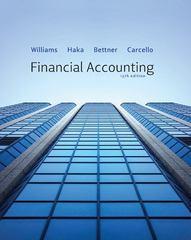Question
Commercial banks were accused of being too speculative in the pre-Depression era because they were diverting funds to speculative operations. Thus, banks became greedy, taking
Commercial banks were accused of being too speculative in the pre-Depression era because they were diverting funds to speculative operations. Thus, banks became greedy, taking on huge risks in the hopes of even bigger rewards. Banking itself became sloppy, and objectives became blurred. Unsound loans were issued to companies in which the bank had invested, and clients would be encouraged to invest in those same stocks, thiswas responsible for creating the https://www.investopedia.com/terms/f/fdic.asp
In response to one of the worst financial crises at the time, the Glass-Steagall Act set up a regulatory firewall between commercial and investment bank activities. The Glass-Steagall Act was also passed to encourage banks to use their funds for lending rather than investing those funds in the equity markets. This was intended to increase commerce. However, the stipulations of the act were considered harsh by most in the financial industry, and it was very controversial. The Act was signed into law by President Franklin Delano Roosevelt on June 16, 1933, as part of the New Deal. It became a permanent measure in 1945.
You can find more information about this under the "Banking Crisis" subsection of Ch 21.
- What was the logic behind repealing this act in 1999? Was it due to the contemporary status of the economy or more of a libertarian approach to economics?
- Why was this repealed by a Democratic administration in 1999 when it had been instituted by a Democratic one in 1933. What was the difference between the economic outlook of Clinton and FDR? How much had the party changed in 50 years?
- This act was repealed in 1999 and some see it as a fundamental part of the economic collapse of 2008. What are your thoughts on reinstating this or keeping it dead? Should the government have a hand in market regulation? Why or why not?
THREE HUNDRED WORD
Step by Step Solution
There are 3 Steps involved in it
Step: 1

Get Instant Access to Expert-Tailored Solutions
See step-by-step solutions with expert insights and AI powered tools for academic success
Step: 2

Step: 3

Ace Your Homework with AI
Get the answers you need in no time with our AI-driven, step-by-step assistance
Get Started


